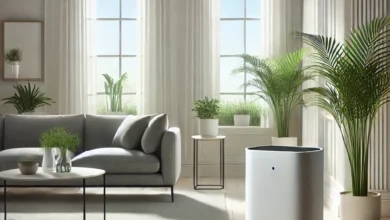Cavity Wall Insulation

Cavity walls are made of a variety of materials. Cavity wall insulation has the potential to alleviate the energy poverty that many homes in Ireland are experiencing. According to available data, about 60,000 low-income households and 160,000 additional households are affected by energy poverty. Invariably, this has a negative impact on their health and indoor comfort while also resulting in significant waste of their limited resources.
Check here : https://www.insulationbee.co.uk/
If you are one of the above-mentioned property owners, insulation in general and cavity wall insulation in particular will be beneficial to you. Cavity wall insulation subsidies are available to assist homeowners with 50 percent to 100 percent coverage of installation costs, reducing the financial burden on them. Cavity wall insulation is a cost-effective home renovation measure that can increase comfort while also increasing energy efficiency. The insulation process reduces the need for heating and cooling by managing comfort and internal temperature. This results in significant savings on heating and cooling expenditures.
It is possible to install this type of home insulation in both existing and new structures. When it comes to cavity wall insulation solutions, those structures built between 1930 and 1989 are excellent candidates. It is important to think about amny factors before making the decision to install thermal insulation in your home. Cavity Wall insulation is primarily used to solve the problem of air leakage via the wall cavity. The air space between the two layers of brickwork that was created to prevent water from entering the house via the walls is referred to as a cavity. The air that passes through the walls and into the house, however, is not prevented by these cavities. As a result of the air traveling through these cavities, your house becomes cool in the winter and heated in the summer, resulting in uncomfortable temperatures in both seasons. As a result, insulation is used to fill in these holes and other spaces in your home’s construction where unwanted air can enter your home.
It is necessary that the installations be carried out by qualified installers because particular tools are required to complete them. No one, not even someone who is naturally gifted with their hands, should attempt this on their own. It is possible to build a cavity wall out of two walls with an air gap in between, or to construct a cavity wall out of hollow bricks. The air gap created in this manner should be continuous in order to achieve efficient cavity wall insulation. It takes around half a day to retrofit cavity wall insulation, depending on the amount of insulation material that is injected into the region and the method used to penetrate the walls into the cavity walls. The advantage of this approach is that the residents of the residence are not forced to abandon the premises while the installation process is taking place. Installing wall insulation, it is also thought to be possible that the brickwork will be damaged throughout the process. However, in the majority of cases, this is not the case.
The insulation is installed by drilling holes in the cement between the T-joints and filling them with fiberglass insulation. Parts of brick corners may be removed during the drilling process, but they can be readily re-filled with the color-matched cement. In general, it is assumed that filling the cavity with insulation will allow rain water to enter the house via the walls, because the cavity is normally employed to prevent rain water from entering the home through the walls. Regardless of which insulating materials you choose, a pre-installation appropriateness check or survey is required to ensure that they are properly installed. The examination must be focused on identifying deficiencies, such as wetness in the walls, because these issues must be addressed if you want to minimize hazards and ensure that the insulation is effective and efficient. The width of the wall should be measured to ensure that the walls span less than 50mm and are therefore suitable for the installation of insulation. Additionally, any PVC-covered electrical lines that may be located in your home must be removed prior to beginning the insulation procedure. Consequently, the use of an insulating material to fill the wall cavity provides a practical solution for both of these heat loss processes. Moisture, air leakage, and insulation are all problems.



